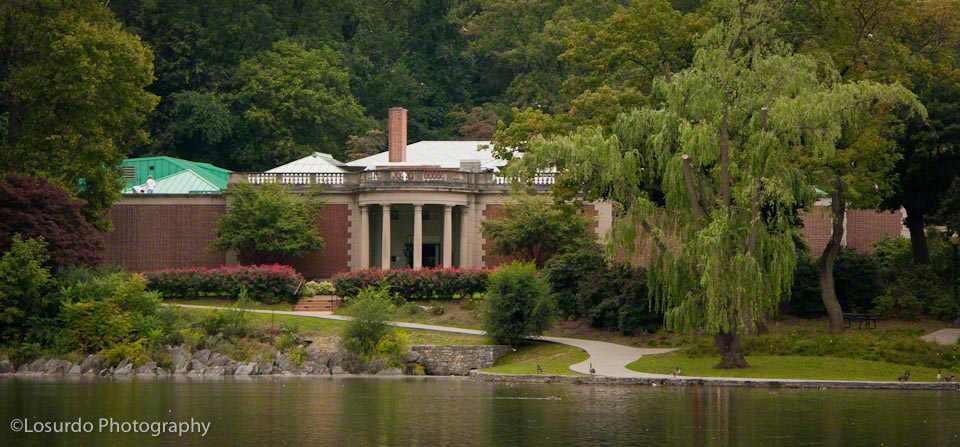Inspired by the 1956 exhibition, This is Tomorrow, at the Whitechapel Gallery in London, the exhibition Thoughts of Tomorrow explores how the human psyche will or may effect the future of not only art, but also the human race. Through the collaboration of artists and interior architects, the Washington County Museum of Fine Arts of Hagerstown, Maryland will provide the public with four different ways of thinking about the future. In the original exhibition Robertson and his team were looking “across the pond” to the Unites States of America. This time around, Thoughts of Tomorrow will be looking at two major world powers, the United States and Japan. Just as the 1956 exhibition, the contemporary show will divide the artists and designers into collaborative groups. Although the past exhibition included twelve groups of larger size, Thoughts of Tomorrow will have four groups consisting of one contemporary artist and one interior architect from Bushey Feight Morin (BFM) Architects of Hagerstown, Maryland. The groups will have the opportunity to create artwork, reuse previous work, and curate their own spaces around the theme of tomorrow.
All artists are strongly encouraged to continue exploring how the human psyche affects our lives and future. The contemporary artists, Desiree Holman, Shizu Saldamando, Kevin Zucker, and Motoi Yamamoto, all work in one way or another with the effects of the human mind and its perceptions. For instance, Desiree Holman explores how popular culture affects our ways of thinking. Shizu Saldamando explores social spaces as places for experimentation through intensive realist drawings. Zevin Zucker explores human priorities in his two-dimensional work. Moreover, Motoi Yamamoto is influenced by his past experiences such as the death of his sister causing him to use salt installations as a means of healing. The exhibition will be organized by the content already present in each artist’s practice. For example, Desiree Holman confronts the viewer in a very dramatic and outspoken manner like a storm, whereas Motoi Yamamoto provides much more comfort to his audience; he is the calm. Since the participating contemporary artists are storm-like, calm and everything in between, the exhibition is metaphorically organized so the viewer experiences the calm after the storm.
As stated earlier, the exhibition will be divided into four primary areas each of which will be devoted to one artist and one interior architect. In the first 720 square foot room, the audience will encounter work by Desiree Holman and her assigned designer from BFM Architects. Primarily a video artist, Desiree Holman, is very interested in “what we can recognize about ourselves by peering into alternate fantasy worldscapes.”[1] Often confrontational, her work causes an emotional storm by presenting a new idea to the viewer. For instance, The Magic Window, her three channeled video work and colored pencil series based on the sitcoms Rosanne and The Cosby Show, forces its audience to ask “How much do we create these televisual fictions and how much do these fictions create us?”
The project statement explains that, “Holman's work concerns itself with how far viewers are capable of projecting themselves into these fictional environments and how much these hyperreal environments tell us about ourselves… Weaving back and forth stylistically between an American sitcom television production and a D.I.Y. video art sensibility, the work aims to examine longing, psychological participation and media representations of family.”[2]
The Magic Window dramatically confronts its viewers about the purity of their own perception of family by the increasingly creepy performance video included in the work where disturbing sewn masks are placed over the actor’s heads. In addition, Holman’s work presented in Thoughts of Tomorrow will reflect how these alternate fantasy worldscapes change how a person views life.
Upon being questioned about the purity of human perceptions, the viewer will then enter the second 612 square foot space occupied by Shizu Saldamando, a fine artist with a focus in the two-dimensional, and her BFM Architects partner. Saldamando’s work often discusses “how American social spaces are the laboratories for new ways of being.”[3] For instance, in the oil painting Cat and Carm, the two individuals are kissing as a way of sexual experimentation. Just like Holman, Saldamando comments on how our environment affects us and our future, but in a less uncomfortable and creepy manner. Going from Holman’s space, where the topic of perception was discussed through fantasy, to Saldamando’s gallery, the viewer is brought back to reality. The work present in this gallery will discuss how perception affects the decisions we make and therefore effects our entire lives.
The third area the viewer enters is the same size as the previous room (612 square feet) but contains the work of Kevin Zucker, a fine artist with a focus in the two-dimensional, and his interior architect. This room is a metaphor for the calming storm. The artist’s work often includes painting, drawing, digital printing techniques, and photography.
The artist’s short biography states that, “Zucker presents us with a visual language that is simultaneously real and artificial, hand-made and mechanical, that takes place in the past, present and future – all coming together and falling apart at the same time. The idea of a painting as a space for the collection, archiving, curation, display, and storage of existing information, rather than as a zone for creation or expression, has been central to Zucker’s recent work.”[4]
Play It as It Lays/Sentimental Education, for instance, uses the imagery of a shelf to portray how different aspects of education are organized and ranked in the human mind. This room will assist the viewer in understanding why certain things are prioritized the way they are, or make the audience question this organization even further.
The fourth and final area will contain the collaborated work of Motoi Yamamoto and his assigned designer. Yamamoto is known for his “Floating Garden” salt installation work, which often resembles a hurricane or typhoon. His art is influenced by the death of his sister causing him to begin a meditative installation process.[5] Yamamoto is using salt, which in Japanese culture is associated with purification and mourning.[6] Not only does he use his artwork to heal his emotional wounds, but he also uses it for good through his Return to the Sea Project, which requires all salt used in his installations to be thrown back into the ocean so various marine life may thrive.[7] This room will include a site specific salt installation along with any accompanying work Yamamoto may choose. On the opposite side of the room, a platform with ramp access will sit so the audience can see his salt installation not only from ground level, but also from above. The fourth room may be seen as the calm after the storm, where we begin to prepare for the future.
Just as Robertson’s This is Tomorrow exhibition, Thoughts of Tomorrow makes the audience confront the past, present, and future. The 1956 exhibition strived to emphasize the future, but in fact it also stressed the past and present. Holman uses fantasy worldscapes to make the viewer think about how our televisual environment is affecting our future. Saldamando brings us back to reality and shows us that the social space we place ourselves in will affect everything in our lives. Zucker forces the viewer to understand why certain things in our lives are ranked or prioritized the way they are. Furthermore, Yamamoto provides us with comfort and understanding of what we need to do to improve our future. In the contemporary exhibition, Thoughts of Tomorrow, the Washington County Museum of Fine Arts uses these four collaborative groups to examine how the past and present will affect the future of not only art, but of the human race.
Bibliography
“Desirée Holman_Statement of Purpose 2009”, accessed 11/25/2012, http://www.desireeholman.com/everything_else/DHolman_Statement.pdf
“Kevin Zucker”, accessed 11/25/2012, http://www.gvdgallery.com/artists/kevin-zucker/#artist-bio
“Motoi Yamamoto- Saltscapes”, accessed 11/25/2012, http://www.thisiscolossal.com/2012/11/sponsor-motoi-yamamotos-saltscapes/
“Motoi Yamamoto's "Return to the Sea: Saltworks" -- Spoleto Festival USA at the College of Charleston”, accessed 11/25/2012, http://www.youtube.com/watch?v=eLIJuQSOJis
“Project Statement”, accessed 11/25/2012, http://www.desireeholman.com/everything_else/MagWind_projstat.html
“Salt Project- ‘Returned to Sea’”, accessed 11/25/12, http://www.motoi.biz/english/e_top/e_top.html
“Shizu Saldamando”, accessed 11/25/2012, http://www.npg.si.edu/exhibit/encounter/saldamando.html
[1] “Desirée Holman_Statement of Purpose 2009”, accessed 11/25/2012, http://www.desireeholman.com/everything_else/DHolman_Statement.pdf
[2] “Project Statement”, accessed 11/25/2012, http://www.desireeholman.com/everything_else/MagWind_projstat.html
[3] “Shizu Saldamando”, accessed 11/25/2012, http://www.npg.si.edu/exhibit/encounter/saldamando.html
[4] “Kevin Zucker”, accessed 11/25/2012, http://www.gvdgallery.com/artists/kevin-zucker/#artist-bio
[5] “Motoi Yamamoto- Saltscapes”, accessed 11/25/2012, http://www.thisiscolossal.com/2012/11/sponsor-motoi-yamamotos-saltscapes/
[6] “Motoi Yamamoto's "Return to the Sea: Saltworks" -- Spoleto Festival USA at the College of Charleston”, accessed 11/25/2012, http://www.youtube.com/watch?v=eLIJuQSOJis
[7] “Salt Project- ‘Returned to Sea’”, accessed 11/25/12, http://www.motoi.biz/english/e_top/e_top.html
This exhibition proposal/ concept is copyrighted Carlee A. Myers.

